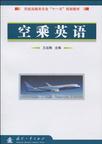空乘英语
出版时间:2010-5 出版社:国防工业出版社 作者:王远梅 编 页数:229
Tag标签:无
前言
随着中国航空市场的蓬勃发展,国际航线的日渐增加,越来越多的航空公司开通了中国至世界各地的航班,如何提高机上服务水平成为各航空公司一项迫在眉睫的工作,要提高机上服务水平关键在于要有一支高素质的空中乘务人员队伍,提高空中乘务人员的英语实际应用能力则是提高服务质量的前提。 《空乘英语》正是在这种情况下应运而生的。本教材针对高职高专院校空中乘务专业的英语课程,是以培养和提高学生的英语交际能力和机上的应变能力为目标的实用教材。本教材从培养高级应用型人才的总体目标出发,结合学生毕业后的工作实际,力求向学生提供其未来工作岗位所需要的专业英语知识技能,培养学生使用涉外业务英语的交际能力。本教材本着“以应用为目的,实用为主,够用为度”的原则,着重强调实用性、常识性和灵活性,把空中乘务工作中可能用到的英语词汇、句型、语法和相关知识作为重点内容,尽量避免过于生涩、专业的词汇,使学生能够真正学以致用,为高职高专培养实用型人才尽绵薄之力。 《空乘英语》基本以实际客舱服务的程序为顺序,共分20个单元。每个单元包含四个部分(Dialogues,Announcements,Phonetics,Reading),并且每一部分都配有针对性的练习,以提高学生的机上英语口头交际能力、广播能力,扩大其专业知识面。本教材旨在全面加强学生机上服务英语基本技能训练,培养学生实际运用英语的能力,使之在英语会话方面具备空中乘务工作所需要的基本能力。因此本教材在编写中力求体现以下几个特点。 (1)以航空服务业为背景,以客舱服务工作程序为主线,培养学生正确的学习方法和独立工作能力。 (2)根据机上服务工作的实际需求,有针对性地培养学生的英语口头表达能力,帮助学生掌握语言的交际功能。 (3)在培养英语语言能力过程中,丰富学生在民航领域,尤其是航空商务英语方面的专业词汇和实用知识,为学生将来步人社会从事航空服务行业工作,进一步提高英语的交际能力打下基础。 本书由王远梅任主编,吴啸骅、唐菁、韩海云任副主编,姜兰、黄华、吕娜、徐哗参编。全书由王远梅统稿。
内容概要
本书根据《高职高专教育英语课程教学基本要求》和空中乘务员实际工作需求而设计和编写,旨在通过真实的行业背景、身临其境的职业场景、原汁原味的客舱用语、实用丰富的民航知识和有针对性的练习来提高学生英语交际能力和客舱服务水平,实用性强。 全书共20个单元,每单元由四部分组成。其中,每单元的Part One(对话)和Part Two(广播词)为本书的重点,应在课堂上重点讲解并让学生充分练习,以达到学以致用的目的;Part Three(语音)应在教师的指导下在课堂上完成;Part Four(阅读)的内容可以作为泛读材料,要求学生在课前预习,上课时教师进行检查,并根据学生掌握的情况进行适当的讲解。 本书可作为职业院校空中乘务、航空服务等专业的教材,也可作为航空公司新引进空中乘务员的英语培训教材,或空中乘务员复训时英语书面及口语测试的参考材料。
书籍目录
Unit One Part One Dialogues: Passenger Reception Part Two Announcements: Welcome and Recheck of Boarding Pass Part Three Phonetics: American and British Phonetic Symbols in Contrast Part Four ReadingUnit Two Part One Dialogues: Arranging Seats Part Two Announcements: Pre-take off Safety Check Part Three Phonetics: The Vowels and Consonants Part Four Reading Unit Three Part One Dialogues: Arranging Baggage Part Two Announcements: Baggage Check Part Three Phonetics: The Pure Vowels Part Four ReadingUnit Four Part One Dialogues: Delay Part Two Announcements: Welcome after a Delayed Departure Part Three Phonetics: The Diphthongs Part Four ReadingUnit Five Part One Dialogues: Safety Check Before Take-off Part Two Announcements: Safety Demonstration Part Three Phonetics: The Explosive and Fricative Consonants Part Four ReadingUnit Six Part One Dialogues: After Takeoff Part Two Announcements: Introduction of Flight Routes and Service Items Part Three Phonetics: The Affricate, Nasal, Lateral Consonants and the Semi-vowels Part Four ReadingUnit Seven Part One Dialogues: Drink Service Part Two Announcements: Drink and Meal Services Part Three Phonetics: Syllables and Word Stress Part Four ReadingUnit Eight Part One Dialogues: Food Service (I) Part Two Announcements: Before Landing Part Three Phonetics: Open Syllables and Closed Syllables Part Four ReadingUnit Nine Part One Dialogues: Food Service (If) Part Two Announcements: Flying at Night and Stopover Part Three Phonetics: Reading Rules of English Vowel Letters in Stressed Syllables Part Four ReadingUnit Ten Part One Dialogues: Abnormal Situations in Service Part Two Announcements: Apologies for Abnormal Service Part Three Phonetics: Reading Rules of English Vowel Letters in Unstressed Syllables Part Four ReadingUnit Eleven Part One Dialogues: Duty Free Sales Part Two Announcements: Movies/Duty-free Sales Part Three Phonetics: Reading Rules of Double Syllables Part Four Reading Unit Twelve Part One Dialogues: In-flight Entertainment Part Two Announcements: Holidays and Festivals Part Three Phonetics: Reading Rules of Multi-syllables Part Four ReadingUnit Thirteen Part One Dialogues: Jet Lag Part Two Announcements: Quarantines Part Three Phonetics: Loss of Plosion and Incomplete Plosion Part Four ReadingUnit Fourteen Part One Dialogues: Airsickness Part Two Announcements: Landing Part Three Phonetics: Consonants Clusters and Sound Linking Part Four ReadingUnit Fifteen Part One Dialogues: Sick Passengers Part Two Announcements: Cancellation and Staying Overnight Part Three Phonetics: Reading Rules of Noun+s/es and Verb+ed Part Four Reading Unit Sixteen Part One Dialogues: Helping Passenger Find Lost Articles Part Two Announcements: Waiting for Clearances Part Three Phonetics: Sentence Stress Part Four Reading Unit Seventeen Part One Dialogues: Transit Passengers Part Two Announcements: Landing in Transit Part Three Phonetics: Thought Patterns and Pausing Part Four ReadingUnit Eighteen Part One Dialogues: Filling Out Forms Part Two Announcements: Unexpected Situations Part Three Phonetics: Intonation Part Four ReadingUnit Nineteen Part One Dialogues: Emergency Procedures Part Two Announcements: Emergency Procedures Part Three Phonetics: Use of the Falling Tone Part Four ReadingUnit Twenty Part One Dialogues: Pre-arrival and After Arrival Part Two Announcements: Brace for Impact Part Three Phonetics: Use of the Rising Tone Part Four ReadingWords and PhrasesReferences
章节摘录
Flight crew is a group of people employed by an airline who have duties on board the aircraft. It consists of two kinds of people: those who are responsible for the safety, efficient operation of an aircraft and those who are responsible for the safety and wellbe- ing of passengers on a flight. The first kind is called pilots and the other, cabin crew. Pilots exercise command over the crew, including the co-pilots (first officers) and cabin crew. Aircraft are usually operated by two, three or four pilots, depending on the type of aircraft and length of journey. The pilot who is called the captain is the more senior one. He has full responsibility for the safety of the aircraft and its occupants. Pilots are needed in four areas: passenger scheduled services; passenger charter services; freight services; and business aviation (general aviation). The business avia- tion is the biggest sector worldwide and includes private aircraft, flying schools, and companies transporting oil and gas workers to offshore rigs. Many consider flying to be a dream job but perhaps have an unrealistic idea about what it is really like. In fact, the job demands a great deal of personal commitment and self-sacrifice. A pilot has to pass stringent training courses, and then be tested in recur- rent training twice yearly in order to maintain the relevant license. Cabin crew is the people who are working with the passengers in the cabin. They attend to passengers needs throughout the flight, serving refreshments and selling du- ty-free goods, so customer service is vital. They are expected to be friendly, enthusias- tic and courteous at all times. Cabin crew can also be divided into two groups: the senior member is called flight director or purser and those who work under the senior member are called cabin attendants. A qualified cabin crew must be with lofty goals and passion. But thats not enough. High level of professionalism and hard working attitude are a must. Language is also important, and an excellent cabin crew must be able to communicate with passengers in English fluently who are not sharing the same language. Cabin attendant should carry out a range of duties: attending a pre-flight briefing, and crew members are assigned their tasks for the coming flight.
编辑推荐
本教材基本以实际客舱服务的程序为顺序,共分20个单元。每个单元包含四个部分(Dialogues,Announcements,Phonetics,Reading),并且每一部分都配有针对性的练习,以提高学生的机上英语口头交际能力、广播能力,扩大其专业知识面。本教材旨在全面加强学生机上服务英语基本技能训练,培养学生实际运用英语的能力,使之在英语会话方面具备空中乘务工作所需要的基本能力。
图书封面
图书标签Tags
无
评论、评分、阅读与下载
用户评论 (总计26条)
- 这本书要求英语基础要比较好的学生。
- 买来学习的用的,应该是一本很好的教材,老师推荐买的哦
- 这本书本来是我的教科书 上个学期的书 没想到这个学期继续用 但可惜的是我弄丢了 只好再买一本 于是老师就推荐我**当买
- 很全面,哈哈
- 很好的书,就是太简单,能否多增加点阅读资料。
- 内容不错!就是没有中文翻译,有些吃力!
- 内容不错,是我用的到的。
- 今天收到!會把它背完。
- 付余款, 款已付,就客人一路, 考日语
- 复印,覆雨剑, 伊人妇科,就开发与,
- 仓库门口堵退款更好的健康每一天的吗
- 很不错,挺详细的
- 还没细看,应该还可以
- 不过感觉是正版的额
- 找本这方面的书还真挺不容易的,而且这本非常好。。。
- 对话比较实用,针对性比较强~难度不是很大~
感觉阅读部分用处不大哎,不过比那些同类型的非教科书好多了~ - 蛮专业的空乘书,美中不足的是课后题没答案!阅读部分没翻译
- 比较实用吧。
- 还没怎么看 应该很实用
- 比其他同类型的好点
- 这本全是挺全的就是没有中文看起来不太方便啊还有没有磁盘听收的书有点破有些地方坏了
- 练习题没有答案啊。
- 这个是教材用书,应刷和纸张就跟学校练习册一样,而且还有课堂练习题
- 建议不要买, 没太多用处~
- 书质量不好。没有想看的欲望!
- 空乘英语
